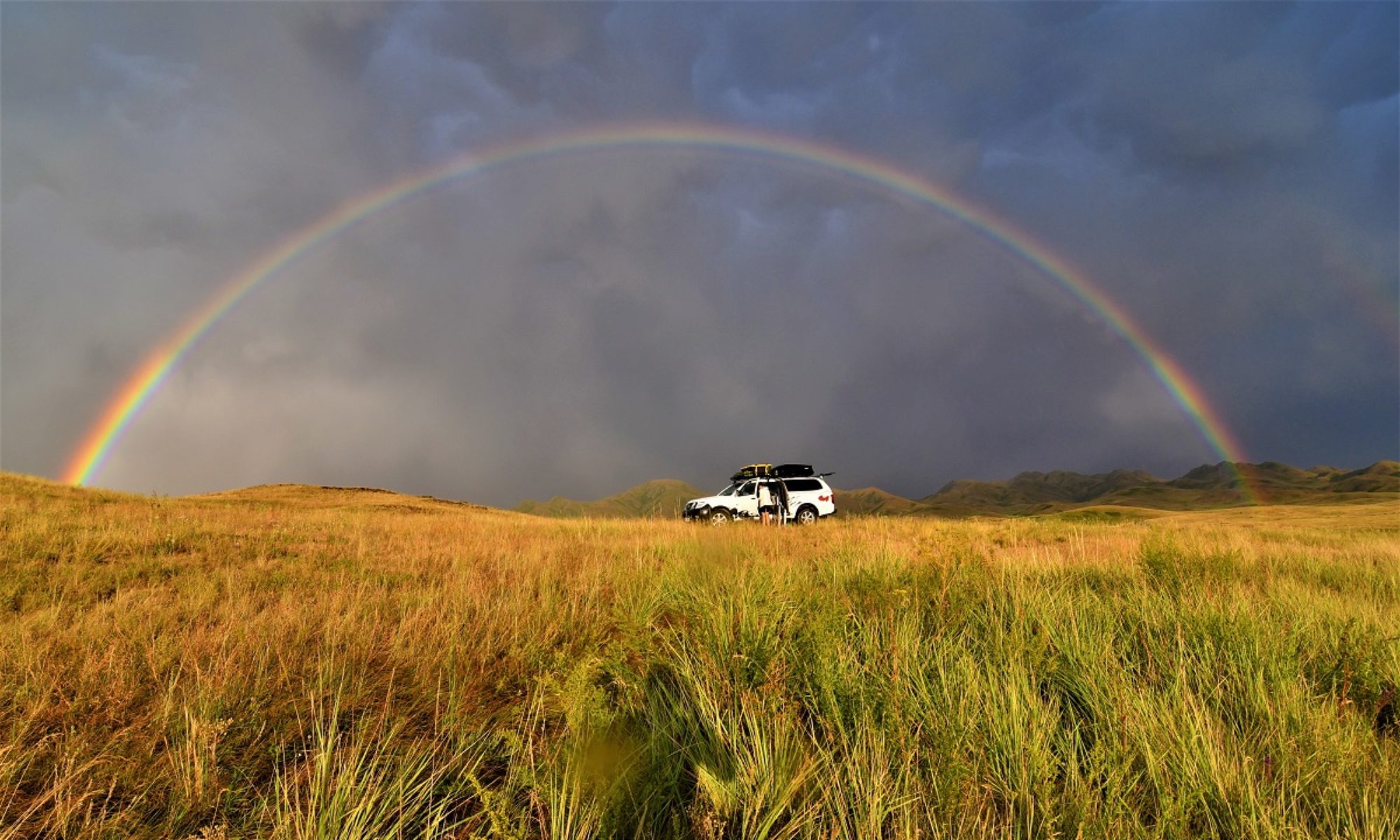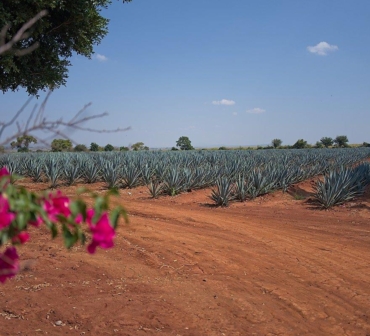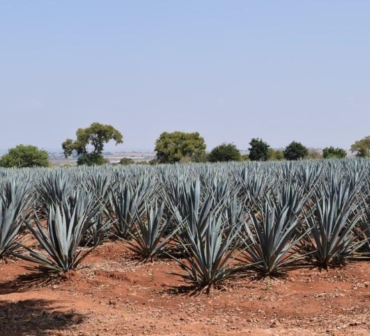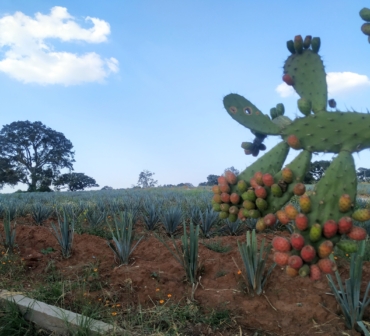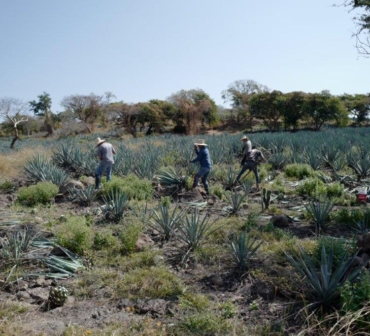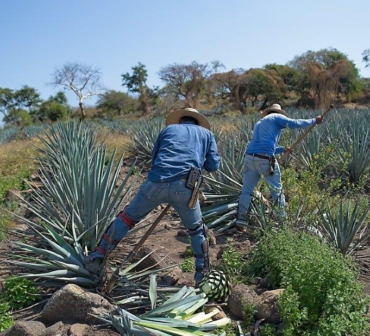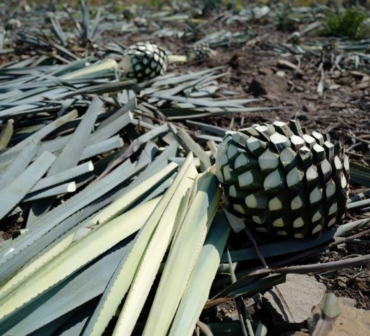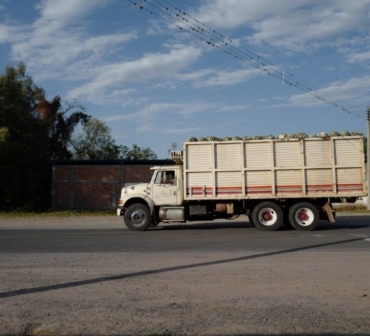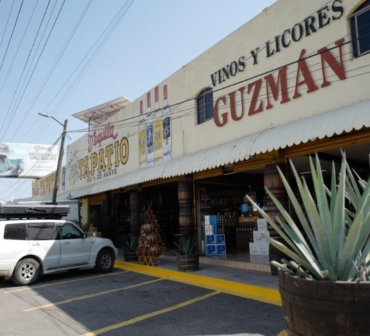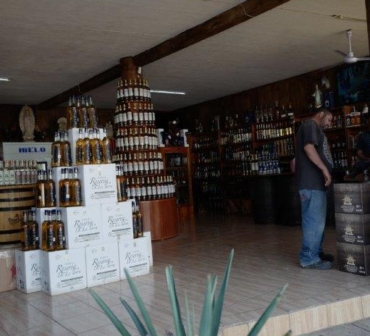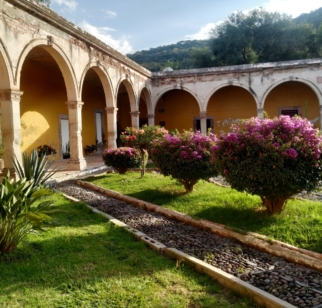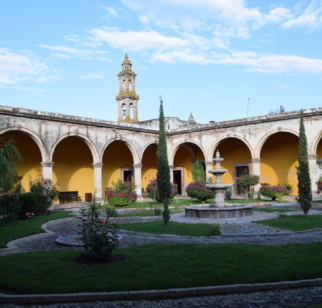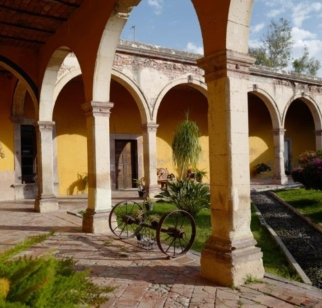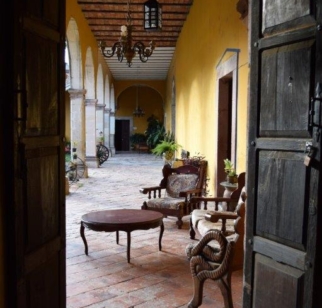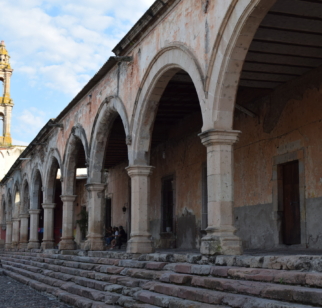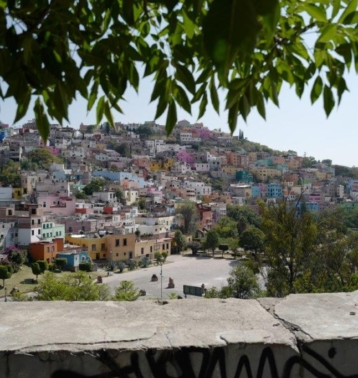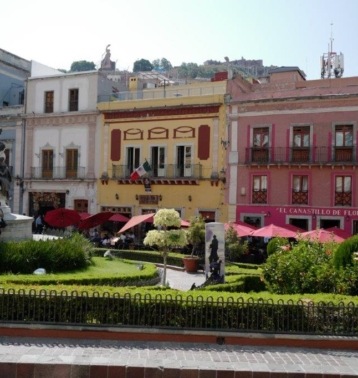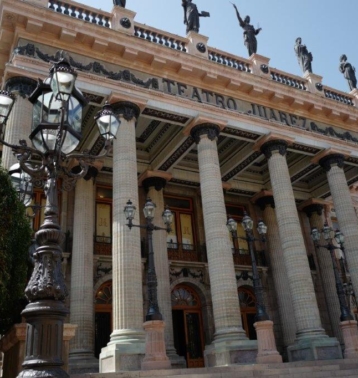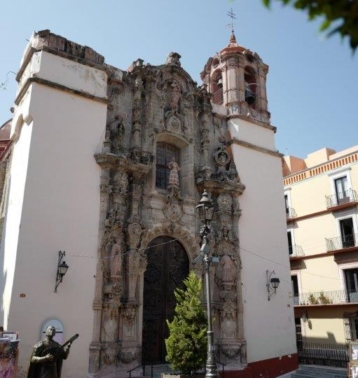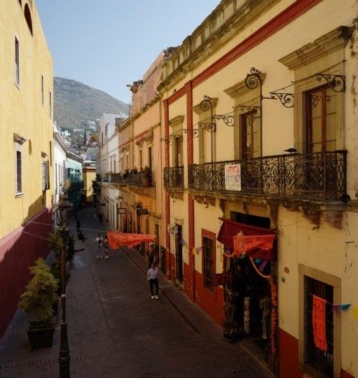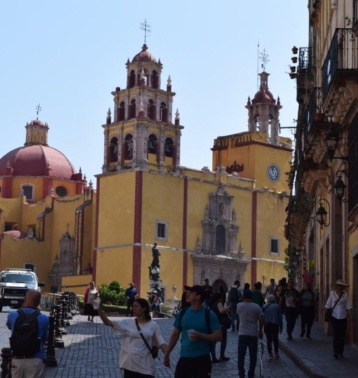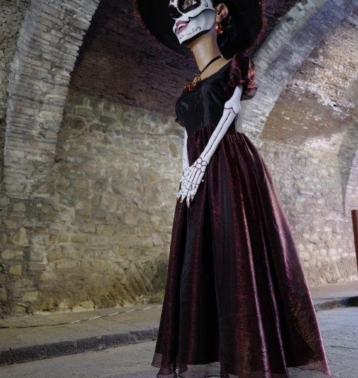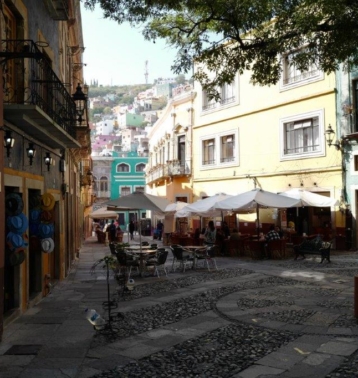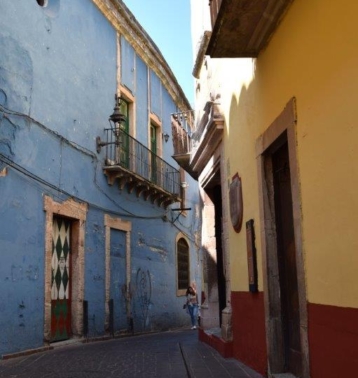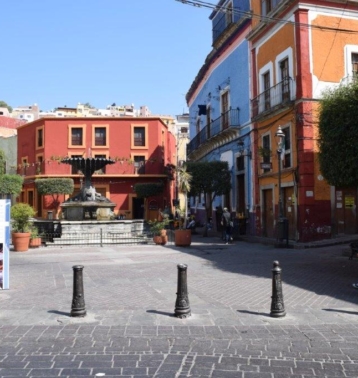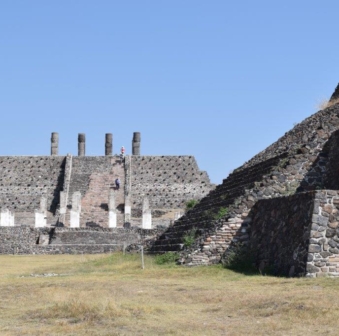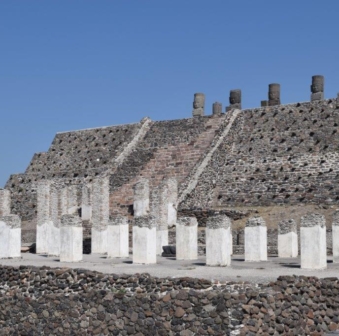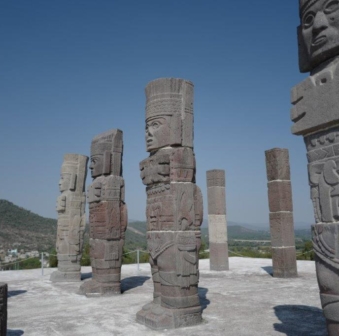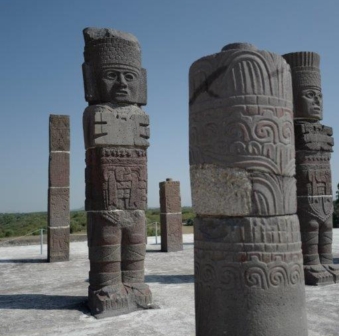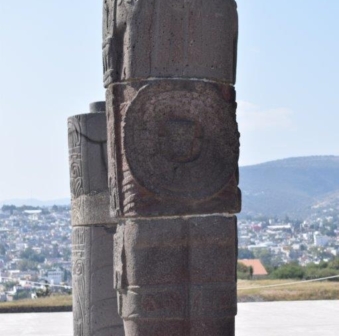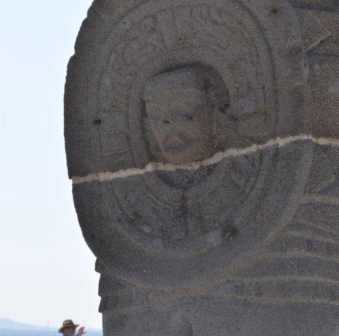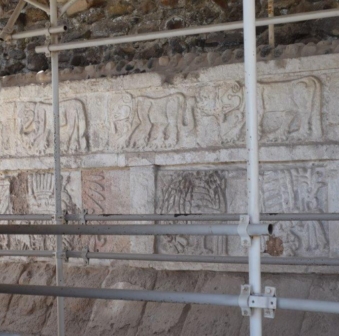The road to Guanajato led us through Tequila country and fields of blue agave plants. By Mexican law, Tequila can only be produced in the state of Jalisco and limited municipalities in the states of Guanajuato and a few other states.Any agave-based distilled spirit outside those regions are called “mezcal.”
The origin of the Tequila can be traced back to the Aztecs, over 1,000 years ago, with their fermented milky drink called “pulque”
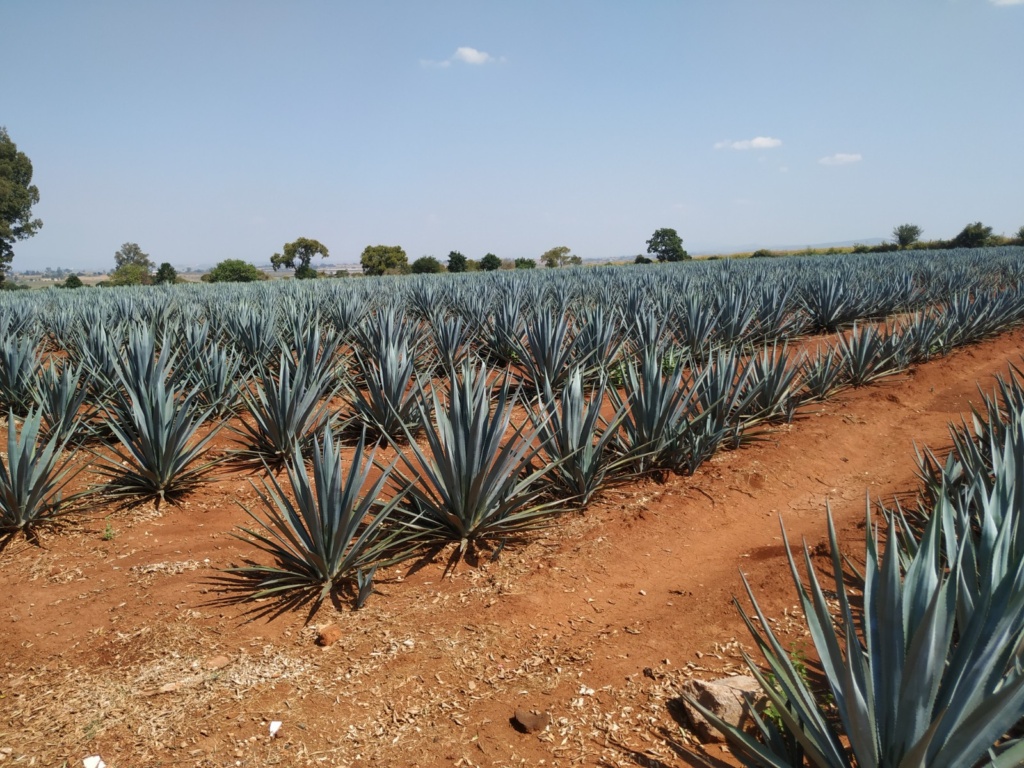
We camped a couple of times near these fields and you have to be careful. The pointed leaves are very sharp and can draw blood !
We saw people harvesting the agave and men were wearing shin guards on their legs and using a long handle with a sharp blade at the end to cut the leaves.
The plants are harvested at the age of seven years, when sugar content is at its peak. The leaves are cut off, leaving a ‘head’ that looks like a huge pineapple. (called piña). Heads are then cooked for the sweet juice, which is fermented and distilled into liquor.
[click on picture to open gallery]
There are several types of Tequila:
Blanco: bottled immediately after distillation( gives the authentic earthy flavor of the agave but can be sharp to the taste)
Reposado: Tequila aged 2 to 12 months in oak barrels
Joven: a mixture of Blanco and Reposado Tequilas
Añejo :Tequila aged between 1-3 years in oak barrels. Extra Añejo is aged 3 years or more
On the way we stopped at an old Hacienda, attracted by its beautiful but sadly slowly going to ruins buildings. The living quarters are spread on the sides of an internal courtyard and there is also a chapel where mass is still taking place once a month. Three families are living there, one man explained to us that his grand-father originally owned the Hacienda. They have fallen on difficult times and cannot bear the cost of maintaining such a huge building. Some of the ceilings have already caved in. Such a shame!
[click on picture to open gallery]
GUANAJUATO historic town and Unesco registered.
This town, founded by the Spanish, was once the world’s leading silver extraction-centre in the 18th century. Today the huge mine shafts have been converted into subterranean streets and tunnels for traffic. The town has fine Baroque and neoclassical buildings, and two of its churches are considered to be among the most beautiful examples of Baroque architecture in Central and South America. Guanajuato was also witness to events which changed the history of the country (ref Miguel Hidalgo and his “Grito de Dolores” on 15 September 1810 which led to the War of Independence )
[click on picture to open gallery]
TULA de ALLENDE – Archeological site
Tula is a Mesoamerican archeological site, which was an important regional center which reached its height between 900 and 1150 as the capital of the Toltec Empire between the fall of Teotihuacan (between 650 and 750 ) and the rise of Tenochtitlan (circa 1325). Much of Toltec history was lost when Izcoatl (1380–1440) the fourth king of Tenochtitlan, and the founder of the Aztec Empire, ruling from 1427 to 1440) burned the history books after founding the Aztec Empire.
Quetzalcoatl, the feathered serpent deity was widely worshipped from what is now central Mexico down into Central america. The god is linked to a legendary ruler of Tula, Ce Acatl Quetzacoatl, who was often simply referred to as Quetzalcoatl.
The major attraction of the site is Pyramid B also called the Pyramid of Quetzalcoatl or of the Morning Star. At the top of Pyramid B are four massive columns each carved in the likeness of Toltec warriors which once supported the roof of the temple on top of the pyramid. Each warrior figure is of basalt, four meters high, with an atlatl (or spear thrower), incense, a butterfly shaped chest plate and a back plate in the shape of a solar disk.
[click on picture to open gallery]
